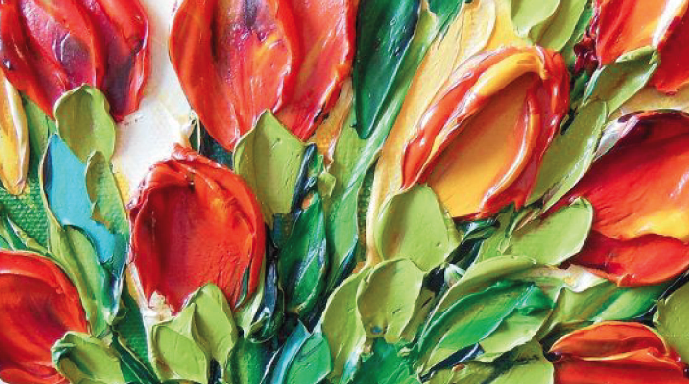Discover and Mastering the Layering Technique in Art – The layering technique in art is a fundamental method used by artists to create depth, complexity, and visual interest in their works. This technique involves applying multiple layers of paint, colors, or materials to the surface, resulting in rich and textured compositions. In this article, we delve into the world of layering in art, exploring its purpose, techniques, and different types.
Understanding the Layering Technique in Art
Layering is the process of adding multiple thin layers of paint or other materials to a canvas or surface. Each layer interacts with the layers beneath it, creating a sense of depth and complexity that enhances the overall visual experience of the artwork. Artists use this technique to build up colors, textures, and details gradually, resulting in a more intricate and captivating piece. premium303
Reasons for Using Layers in Art
- Depth and Dimension: By layering different colors and values, artists can create the illusion of depth and three-dimensionality in their work. hari88
- Texture and Visual Interest: Layering allows artists to experiment with various textures, adding tactile and visual interest to the surface of the artwork.
- Color Variation: Applying multiple layers of paint in varying hues can lead to subtle color variations and harmonious blends.
- Highlighting and Shadowing: Layers can be strategically added to emphasize highlights and shadows, adding realism and drama to the composition.

Exploring the Layering Paint Technique
Layering paint is a versatile technique that artists employ to achieve a variety of effects. Here’s a step-by-step guide to the layering paint technique:
- Start with the Background: Begin by applying a base layer of paint to establish the background color or tone.
- Build Up Colors: Gradually add layers of paint in the desired colors, allowing each layer to dry before applying the next. This technique is often used in oil and acrylic painting.
- Transparent and Opaque Layers: Experiment with both transparent and opaque layers to create different effects. Transparent layers allow underlying colors to show through, while opaque layers provide solid coverage.
- Texture Creation: Use different tools, brushes, and techniques to create texture within the layers, adding depth and dimension to the artwork.
Different Types of Layers in Painting
- Underpainting: The initial layer of paint applied to the canvas, setting the foundation for the rest of the painting. It establishes the basic composition, values, and color scheme.
- Mid-tones and Values: Additional layers of paint are added to develop mid-tones, values, and forms. These layers build depth and dimension within the artwork.
- Highlights and Details: The final layers consist of highlights and intricate details that bring the artwork to life. These layers often involve smaller brushes and meticulous brushwork.
Conclusion
The layering technique in art is a powerful tool that enables artists to create visually captivating and multidimensional artworks. By strategically applying multiple layers of paint, artists can achieve depth, texture, and complexity that enhance the overall quality of their pieces.
Whether you’re a beginner or an experienced artist, mastering the layering technique will undoubtedly elevate your art to new levels of sophistication and visual appeal.